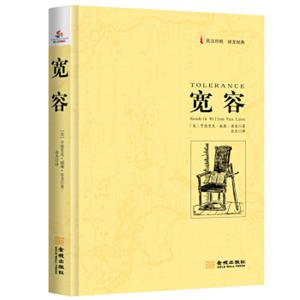![十三世达赖喇嘛(英文)<strong>[The13thDalaiLama]</strong> 十三世达赖喇嘛(英文)<strong>[The13thDalaiLama]</strong>](/upload/english2/thumb/thumb_93933227378.jpg)
十三世达赖喇嘛(英文)[The13thDalaiLama]
编辑推荐
After conquering and occupying India and making ,it the fewel in the Crown"of their great Empire in the 16th and 17th centuries,the British colonialists,utilizing the subterfuge of a nominal trading company,the notorious East India Company, to plan aggressive incursions into neighboring Tibet. During the period from the late 18th to the early 19th century, the British colonialists gained control of vast areas to the south of the Himalayas including Nepal, Bhutan, Dremojong (Sikkim) and kadakh. Dremojong(Sikkim), Ladakh and Bhutan had been previously a part of the Tibet kingdom and thus a part of China. However, the British colonialists cared nothing for such facts. After bringing Nepal and Bhutan under their control they tried to invade Tibet.
In 1904, a British expeditionary arm,/crossed the Himalayas and invaded Tibet for the second time. The Tibetan people, led by the 13th Dalai Lama Tabdain Gvamco, who was then aged only 28, bravely beat back the British invaders. In conditions of extreme hardship, the Tibetan people conducted a guerilla struggle against with the British colonialists which lasted over a year. They fought to maintain the unity of the nation and the territorial integrity of the motherland. The stirring story of the Battle of zongshan Hill in Gvangze is enough to move any proud Tibetan to tears. Hopelessly interior to the invading forces in terms of arms, the Tibetan fighters used the most primitive weapons against the British. They declared defiantly that the,/would fight to the very last man, to "kill all the foreign invaders and defend the territorial integrity of the nation." This battier following the Opium War led by Lin Zexu, marked a critical new chapter in the holy struggle of the Chinese nation against imperialist aggression as they sought to defend the territorial integrity of the motherland and maintain nati.ona[ sovereignty and ethnic dignity. The Book The 13th Dalai Lama-1904 Battle of Gyangze which deals with the events of the famous Battle of Gyangze,in a work of fiction reproduces the brave and solemn history of this historical event. It brings to life the characters and heroes such as the I3th Dalai Lama Tubdain Gyamco, Lhatin5 Deboin (Reglment Commander),Zeling Deboin(Regiment Commander), Lhodain, Kezhol Wangqug, Geleg,Qoini Sammo and Rinsai.
内容简介
《十三世达赖喇嘛》以著名的江孜保卫战为重点,艺术地再现了这段英勇悲壮的历史,塑造了十三世达赖喇嘛土登嘉措等英雄群像,对于政教合一的政治制度及其僧侣贵族联合专政的政权机构的运作形式,以及雪域高原壮丽的风光,独具特色的民族风情,都有细致入微的描写。1888年和1904年,英帝国主义组织远征军,两次武装入侵西藏人民。年仅28岁的第十三世达赖喇嘛土登嘉措率领西藏僧俗人民,英勇抗击英国侵略者。他们用原始的武器,同拥有当时世界上先进的武器装备的英国侵略军,浴血奋战。 The long historical novel The 13th Dalai Lama——Gyangze Battle of 1904 was writtenin the early 1980s, a period when the Chinese Government had just started to put in placethe reform and opening-up policy. It was published by the China Federation of Literary andArt Publishing Corporation in 1985.
作者简介
Gyanpian Gyamco, of the Tibetan ethnic group, was born inBatang County of the Garze Tibetan Autonomous Prefecture ofSichuan Province in 1938. He joined the PLA in 1950 and heworked for the Ethnic Publishing House from 1956 to 1980.Beginning in 1981, he was transferred to work for the EthnicLiterature Research Institute of the Chinese Academy of SocialSciences, engaging exclusively in the research into King Gesar.His works include A Probe Into King Gesar, Biography of KingGesar, Historical Fate of Gesar, Gesar and Tibetan Culture, OnGesar, Approaching Gesar, Galsang Medo, The 13th Dalai Lama,Master Panchen Erdeni, Snowland General Tan Guansan andBiography of Li Jue.
Wu Wei graduated from the Graduate School of the ChineseAcademy of Social Sciences with an MA degree in 1988. Sheengaged in the publishing business as an editor and manager forprolonged period of time.






 在线客服
在线客服